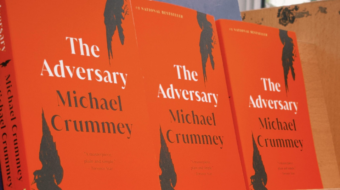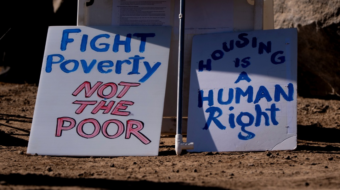On Tuesday, a summit meeting of the BRICS countries got underway in Durban, South Africa. One of the aims was to work toward a new development bank to be funded by the five BRICS countries (Brazil, Russia, India, China, and South Africa), as well as other projects.
The reaction in the corporate-controlled press in the United States and worldwide was generally negative. Representatives of entities ranging from Goldman-Sachs to the ultra-left denounced the effort as either unfeasible because of the diverse nature of the countries involved, or simply a new form of imperialism seeking to dominate and exploit the poorer countries. But others see the rise of the BRICS countries, and especially their proposed venture into the financing of international development projects, in more positive terms.
The countries are certainly different. China, with a population of 1.3 billion and an annual gross domestic product of GDP $7.3 trillion, has an economy in which both state and private companies play major roles, internally and internationally. India, with 1.2 billion inhabitants and a GDP of $1.85 trillion, is nearly as big as China but also poorer. Brazil’s 200 million people have a GDP of $2.48 trillion. Russia has a population of 142 million and an annualized GDP of $1.86 trillion. South Africa, with a population of 52 million and a GDP of $408 billion, is the smallest economy among the BRICS countries but also the largest economy in sub-Saharan Africa. The world GDP is about 70 trillion, and the combined GDP’s of the five BRICS countries come to about $13.9 trillion, or 20 percent of world GDP, a very substantial economic and financial force, at least potentially. In comparison, U.S. GDP is about $15 trillion, that of the European Union $16 trillion, and of Japan just under$6 trillion.
Much of the discussion in and around the Durban summit focused on Africa. The purpose of the BRICS group is not just to coordinate their own economies, but also to explore ways of competing with the United States and Europe in development and trade projects in Africa, where all of the BRICS countries are now shaping up to be major players.
Africa, especially the sub-Saharan part, is the poorest region of the world. A legacy of colonialism is that almost all African countries are stuck in an economic and trade model of exporting raw materials and importing manufactured goods, an exchange which is rigged against the Africans. Even when the raw materials are extremely valuable, this model does not allow local industry to reach a takeoff point that it would be able to compete with products imported from the wealthy industrialized countries. For financing development aid, African countries have not been able to pool their resources but instead have had to go hat in hand to the International Monetary Fund, the World Bank and the former colonial powers plus the United States. These entities require, for their “help”, very onerous concessions such as unfavorable trade deals, privatization of government functions and budgetary austerity that severely impacts the ability of the African governments to provide for the basic needs of their people. It is little to be wondered that the poorest countries in the world are almost all in sub-Saharan Africa.
It’s a vicious cycle. Without bringing in outside trade and investment, African government cannot even run the bare bones functions of administering their countries. Yet the price of that trade and aid is to dig themselves even deeper in the hole.
It was not always so. Before the collapse of the Soviet Union and its Eastern European allies, especially Czechoslovakia and the German Democratic Republic, these countries financed important development projects in a number of poor African states, and did not force privatization and austerity on them in exchange. The fact that the communist-ruled states were offering these things had a moderating influence on the demands imposed by the capitalist powers.
With the Soviet and Eastern European help gone, the African governments saw the only source of trade and aid end up exclusively in the hands of their former colonial rulers and the wealthy industrial countries of the West, who profit from the unequal existing arrangement.
Two lifelines offer themselves. One is the effort of the left-wing Latin American governments to extend to Africa the same sort of institutions of economic cooperation that have been so fruitful for a number of countries in Latin America and the Caribbean. These efforts offer development aid and trade advantages without demanding neo-liberal concessions from the poorer countries. To extend these efforts to African countries was a major focus of the late Venezuelan President Hugo Chavez before his untimely death, but also has been of interest to Brazil and other countries in the region.
The idea of a BRICS development bank is another one that arouses interest, but the details are important. Will help and financing from the BRICS Bank, or other financial agencies that the BRICS countries might eventually develop, lack the onerous strings that are attached to financing from the International Monetary Fund or the World Bank?
Time will tell. Meanwhile, there is massive new investment by China, and also significant amounts by the other BRICS countries, in African countries. This has set off a jealous reaction among Western capitalists. There have been some African complaints about the behavior of private Chinese companies, and some on the left complain that the BRICS countries are no better than the Western imperialists. But for any African country to have a strong competitor to play off against the companies and governments is seen as a step forward by many African leaders.










